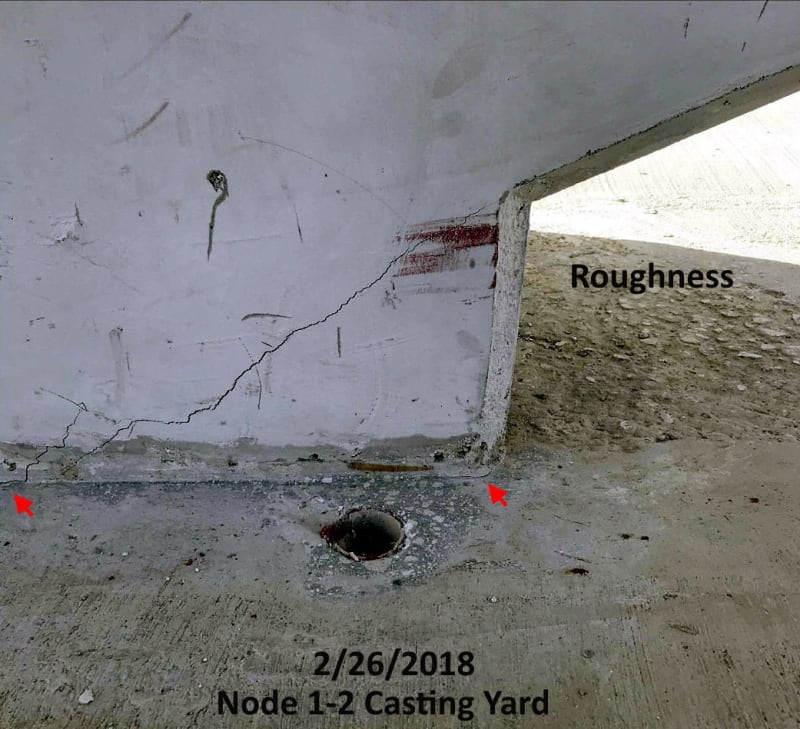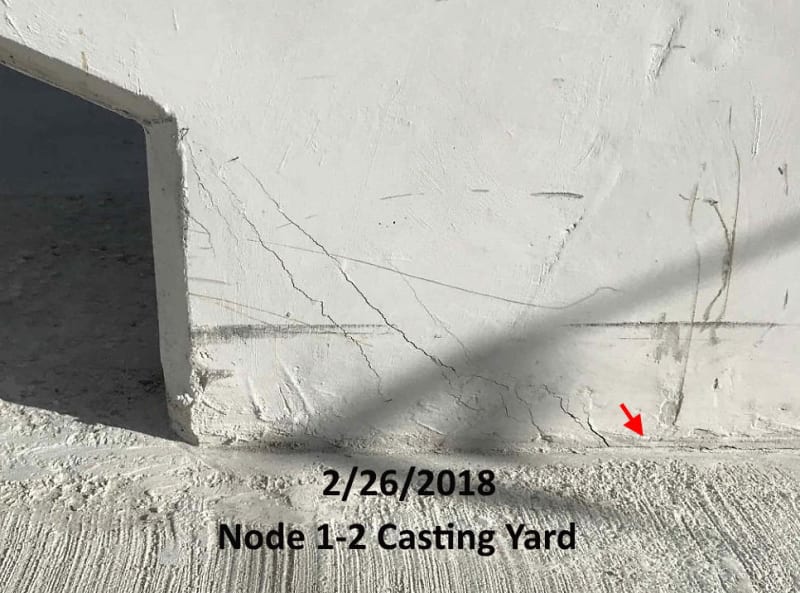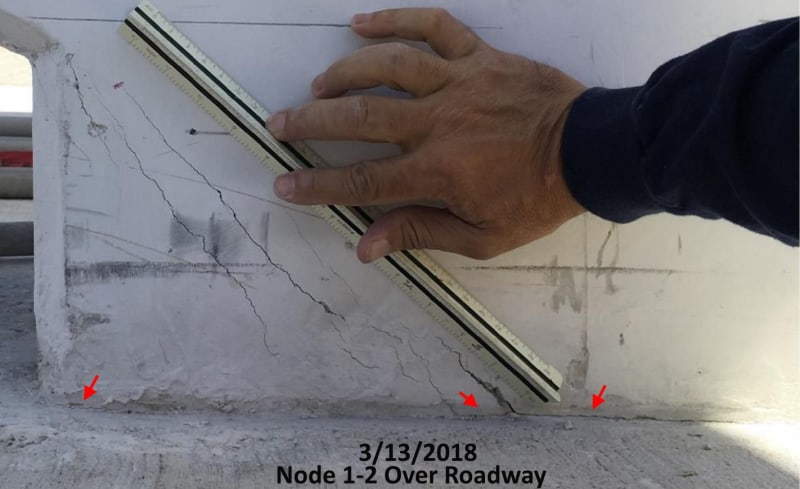Reading through FIGGs analysis as well, Vance. I find it supremely unconvincing.
They state several times that MCM/BP did not accurately inform them that the cracks in 11/12 and the pier diaphragm we’re getting worse, and then they admit in the details that they knew this information but were not given specific crack reports with detailed crack progression maps. They complain that pictures taken late Tuesday prior to the collapse were not sent to them in a timely fashion and that had they seen these pictures their response would have been different. But FIGG had already instructed MCM to place the center pier shim and get the crew out to retension the PT bar in 11. From what I have read, it also appears that the EOR had already prepared the slide presentation (the one given on March 15th) by the end of day on March 12th.
Importantly, this presentation was not shared with the other FIGG engineers. They all state that the EOR liked to keep this kind of thing under wraps?!? None of the other FIGG engineers indicate they were tapped to look into the cracking or run any calculations.
Once the EOR was on-site and viewed the cracks in person there were no apparent changes to the recommendations or presentation. Clearly, seeing the cracks in person made no difference (mind was made up, no safety concern because...it hadn’t fallen yet?). The fact that FIGGs models could not account for the cracks didn’t seem to bother the EOR(I disagree, some of the modeling very clearly indicated the cracks in the diaphragm were predictable and it was in danger of failure).
FIGG has a point that the monitoring of the cracks by BP/MCM fell off during the weekend and wasn’t documented very well on Monday/Tuesday. Had BP/MCM continued to measure progress and take pictures that clearly showed the sizing of the cracks, as they did in the first crack report in February, the situation would have been a lot clearer to everyone.
There were so many communication break downs on this project. MCM and BP believed (so they say) that they could not close the street under the bridge without FIU/FDOT involvement. BP specifically mentions that they got push-back from FDOT just for closing the lanes for retentioning of the 11 PT bars. Jose Morales of BP said that while he was at the March 15th meeting he didn’t really follow the technical presentation and relied on the EOR when it came to the safety of the structure. Same for MCM folks. They had every reason to trust that what the EOR said was true, they say. No one noticed that the presentation given by FIGG used different results for the force and capacity calculations than on the original plans! Even FIGG could not replicate their earlier results, which should have been a red flag.
Several times during the project, FIGG hurried through a stage and forced other’s to hurry as well. FIGG decided that they didn’t need a second independent peer review of their bridge design and construction plans. They used their own people (in a different office) until FDOT reminded them that was not permitted by the LAP project requirements. In order to stay within their prescribed timeline, FIGG had to hurry and hire LB to complete the review. But they also had to reduce the amount of time allotted for the review from 10 weeks to 7 and lowered the budget substantially. And they never bothered to check that LB was precertified to conduct this review for a complex bridge structure in concrete. I think the hurry to get it done helped create this gap where so many double-checks were missed.
Then, once FIGG decided on Tuesday to retension the PT bars in 11 they pushed MCM to get the VSL crew out ASAP. The only reason the retensioning project was delayed until after the Thursday meeting was because VSL wasn’t available. FIGG did not ask for more information or wait until they could view the cracks in person before this step was completed. It was only luck that prevented the VSL crew from doing the retensioning earlier on Wednesday. BP didn’t even know the retensioning was going to happen until the meeting!
Notably, the BP inspector certified for PT operations was not called in to monitor the retensioning efforts. He had been at all of the other tensioning/untensioning operations. So BP asked another of their guys to watch the retensioning. He admitted he had never been asked to do this before and was only there to have “eyes on” the project.
Regarding FIGGs statement that the only reason the bridge came down was due to the failure of the MCM team to roughen the concrete in the cold joints to the 1/4 inch amplitude...I call BS. Agree with the Mad Spaniard that this is a complete red herring. FIGGs “testing” is so rife with errors it really has little bearing on the bridge as it was constructed. FIGG dropped the ball in their plans by not specifying how all the cold joints were to be treated but in the end, the faulty design was the proximate reason for the collapse.
I am curious about one thing, though. Typically, would a contractor close a job site or street for safety concerns if their EOR had stated clearly and multiply that there was no reason for concern? How likely is it that a contractor like MCM would override their EOR? Would it matter if the EOR was a big name in the region? I’m trying to figure out for myself if the reputation of the EOR played a roll in everyone just taking what he said at face value and not challenging it.



